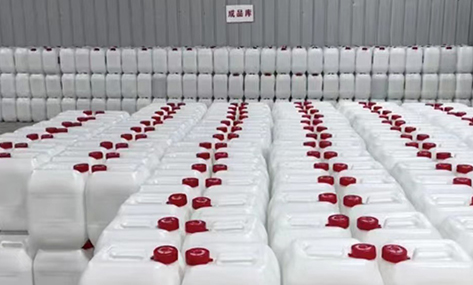
Nov . 11, 2024 01:37 Back to list
Preparation and Uses of Dilute Glacial Acetic Acid in Laboratory Applications
Understanding Dilute Glacial Acetic Acid
Glacial acetic acid, a colorless liquid with a strong odor, is a vital chemical compound with numerous applications across various industries. This simple carboxylic acid has profound significance in the production of vinegar, plastics, synthetic fibers, and numerous other chemical processes. When referring to dilute glacial acetic acid, we often consider its practical uses and safety guidelines, especially given its corrosive nature in concentrated forms.
What is Glacial Acetic Acid?
The term glacial refers to the fact that acetic acid can freeze at temperatures around 16.6 degrees Celsius (61.88 degrees Fahrenheit), forming a solid that resembles ice. Pure acetic acid is referred to as glacial acetic acid, while dilute acetic acid solutions are typically water mixtures that contain a lower percentage of the acid. Generally, the concentration of acetic acid in a dilute solution can range from about 1% to 20%, depending on its intended purpose.
Applications of Dilute Acetic Acid
Dilute acetic acid is widely used in laboratories and industries due to its versatility. In the food industry, a common application is its use as a preservative and flavoring agent. It is the main ingredient in vinegar, which not only enhances the taste of food but also helps preserve it by inhibiting the growth of certain bacteria.
In the textile industry, dilute acetic acid is instrumental in the dyeing process. It helps in setting dyes in fabrics, ensuring that colors remain vibrant and do not easily wash out. Moreover, its capacity to act as a pH regulator can help improve the effectiveness of various chemical processes.
dilute glacial acetic acid

In the realm of chemistry, dilute acetic acid serves as a reagent or solvent in various reactions. It is often favored for its ability to dissociate partially into acetate and hydrogen ions, making it a weak acid that can be advantageous in controlled reactions. Additionally, in the realm of biochemistry, it is pivotal for various metabolic processes.
Safety Considerations
While dilute acetic acid is safer to handle than its concentrated form, it is important to maintain prudent safety practices. Direct contact with skin or eyes can cause irritation, and inhaling vapors may lead to respiratory issues. Therefore, using appropriate personal protective equipment is crucial. This includes gloves, goggles, and masks when handling the acid or working in areas with poor ventilation.
In laboratory settings, it is advisable to work with dilute acetic acid in a fume hood to mitigate exposure to vapors. Any spills should be addressed promptly, cleaning with appropriate neutralizing agents and adhering to material safety data sheets (MSDS) for proper disposal methods.
Conclusion
In summary, dilute glacial acetic acid is a valuable substance with far-reaching implications across various sectors. Its usage spans from culinary applications to industrial processes, underscoring its versatility as a chemical compound. However, safety remains paramount when handling any concentration of acetic acid. By understanding how to use and manage dilute acetic acid responsibly, we can harness its benefits while minimizing risks. Thus, this compound continues to be a staple in both commercial and laboratory environments, shaping the way we experience and interact with various products every day.
-
SmartAgri Solutions - Precision Farming&Soil Monitoring
NewsJul.13,2025
-
Industrial Solutions-Example Inc.|Smart Manufacturing&Energy Efficiency
NewsJul.13,2025
-
Food Grade Glacial Acetic Acid-Pure Quality|High-Purity Acetic Acid,Food-Grade Chemical
NewsJul.13,2025
-
Industrial Efficiency Solutions-NextGen Technologies|Advanced Automation&Data-Driven Analytics
NewsJul.12,2025
-
Smart Manufacturing Solutions-Example.com|Enhance Efficiency&Reduce Costs
NewsJul.12,2025
-
Food grade glacial acetic acid
NewsMar.07,2025
